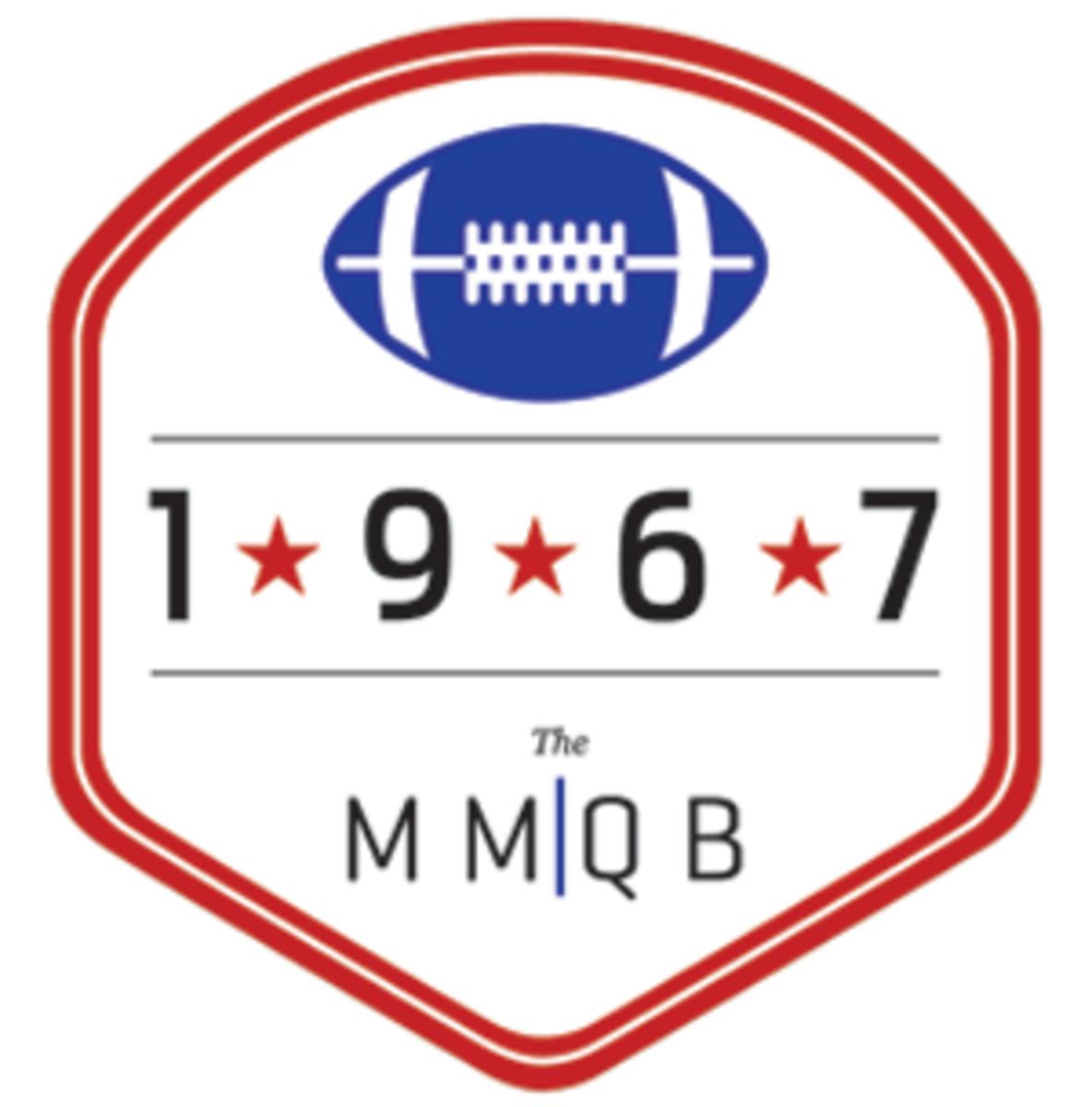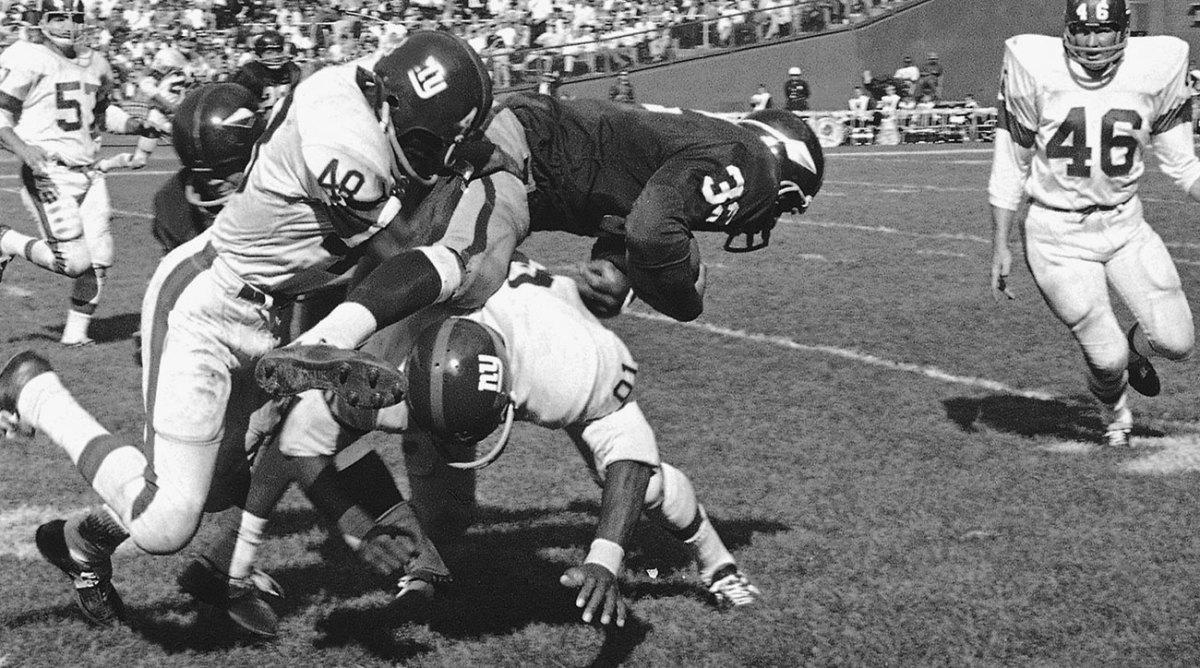What Happened To Washington's Ray McDonald?

There’s an old story about Vince Lombardi, told to demonstrate the legendary coach’s obsession with punctuality. Early in training camp in 1969, his single year coaching in Washington after nine distinguished seasons in Green Bay, Lombardi held a team meeting in an auditorium at Dickinson College in Carlisle, Penn. The new coach made his expectations clear to players that summer: If you’re not 15 minutes early, you’re late. So when running back Ray McDonald walked through the swinging double doors—history is hazy on the exact time, as some say seven minutes before 7 p.m. (the prescribed meeting time) while some say as late as 7:20 p.m.—the team’s first pick in the 1967 draft was certainly late.
The player and coach went back and forth. McDonald claims that he wasn’t late—or perhaps that he was, but he had a good excuse. Teammate Walt Rock says that McDonald was playing piano in the dormitory and lost track of time. Accounts differ. Ultimately, Lombardi cut the running back on the spot in front of the entire team.
“Go play for the Roanoke Buckskins or whatever the hell they call themselves,” Lombardi told McDonald, according to linebacker Sam Huff’s 2011 autobiography. “You’re fired!”

Lombardi led Washington to a 7-5-2 record that year, breaking a streak of 13 seasons without a winning record. But that was Lombardi’s last season as an NFL coach—the following September, Lombardi died at 57 years old, going out as one of the greatest coaches of all time.
However, the McDonald anecdote lives on, serving as evidence of Lombardi’s no-nonsense approach. So what happened to the man on the other end of the anecdote?
McDonald had been a prodigious athlete at the University of Idaho, despite an Achilles’ tendon injury he suffered as a freshman that created a permanent limp. He was dapper and kind—a Washingtonian article in 1968 described him as “showy,” a buzz word of the times. He had hands the size of frying pans that glided across the ivory keys of the piano and his voice birthed inspired gospel renditions with heavy and hammering crescendos.
But that evening in Carlisle sent him down a rabbit hole of exclusion and obscurity, ending in his death at the hands of one of the most sinister diseases of our time. After being released in the beginning of his third NFL season at 25 years old, Ray McDonald never played football again.
* * *
Born in McKinney, Texas, McDonald started high school in New Mexico, but followed his coach to Caldwell, Idaho, where he starred in football, basketball and track and field. From there, he ended up at the University of Idaho. Joe McCollum, who went to a nearby high school and wound up playing football at Idaho with McDonald, struck up a friendship with McDonald at a high school track meet.
“The first thing I remember is lining up for the short hurdles and looking down the line and seeing this pair of hands that was twice the size of mine,” McCollum says. “He was a beautiful athlete, and on top of that, a beautiful person. There were very few blacks up here at the time, but Idaho really embraced Ray."
Teammates remember McDonald as being on the quieter side but tremendously athletic. He laughed from his chest, lit up a room with his smile and packed 240 pounds into a 32-inch waist. He spoke with his shoulder pads and his fingertips; after road games, he’d park himself at the lobby piano at the team hotel and play through his jazz and gospel favorites.
“He wasn’t terribly outspoken, but he wouldn’t hold back his feelings,” recalls Steve Buratto, a former Idaho offensive lineman. “He was more of a leader by example. He was such an extraordinary athlete he had the respect and admiration of everybody on the team.”
• The Playoff Bowl: Some labeled the NFL's third-place game the Losers' Bowl or the Toilet Bowl, but it played a significant role in shaping the sports landscape in the 1960s.
In 1965, when McDonald was a junior, the Vandals hosted Oregon State and standout linebacker Jack “Mad Dog” O’Bilovich, an undersized thumper who would go on to win a Grey Cup with the CFL’s Hamilton Tiger Cats. McDonald’s teammates fondly remember O'Bilovich's introduction to McDonald.
“Ray ran off tackle and O’Bilovich met him in the hole and Ray stepped on his chest and kept going,” Buratto said. “The Mad Dog got run over by The Train.”
The questions about McDonald’s sexuality started late in his college career; rumors spread that he was seeing a man at Washington State University in Pullman, Wash., about 10 minutes away from Idaho’s campus. But by that time, McDonald was a living legend on campus in Moscow—he led the team in rushing yards as a sophomore, topped 1,000 yards as a junior and eventually led the nation in rushing (1,329 yards) as a senior in 1966. And this all came on his damaged Achilles’ tendon.
“Ray never was able to truly show what he could’ve done because he limped the whole time he played,” says Mike Monahan, a former Idaho quarterback. “I don’t suspect the doctors back then did a very good job. He led the nation in running and he limped.”
* * *

The NFL had only recently integrated all of its clubs by the time of the first joint AFL-NFL draft in 1967, but it was McDonald’s sexuality that gave teams pause. However, any rumors about McDonald being gay were mitigated by the unanimous loyalty and respect from his teammates. Washington drafted him with the No. 13 pick, two selections ahead of the Vikings’ Alan Page and four spots before Oakland nabbed Gene Upshaw.
At the time, Washington boasted one of the NFL’s most diverse locker rooms. In 1966 Washington’s roster was made up of about 20% black players. In ’67, Ebony magazine wrote, “The Skins have 16 Negroes, more than any other NFL club and a fitting sequel to the boasts of ex-owner George Marshall that the club would never use Negro players.”
But even with Washington’s inclusivity, McDonald was in a new world—the NFL was a big departure from the bubble of Moscow, Idaho, in which he had thrived. During the rookie talent show at Washington training camp in 1967, McDonald delighted some with his piano and singing skills, while others raised their eyebrows.
“People more or less knew he was gay,” says former running back A.D. Whitfield, who played for Washington from 1966 to ’69. “In the first year, there were all kinds of stories about incidents around town.”
McDonald’s teammates didn’t elaborate on the specifics that made them suspect McDonald was gay; they simply referred to ‘incidents’ that happened. One of the biggest incidents? McDonald was reportedly arrested in 1968 for having sex with a man in public.
“Physically he had everything you needed [to succeed in the NFL] but there was something missing,” said former Washington offensive lineman Walt Rock. “Everybody thought he was gay before [the arrest], and then they knew he was gay.”
“The joke was that he loved short yardage runs because he’d have hands all over him,” Whitfield says. “He was just a nice, innocent kid. I felt sorry for him because they took advantage of him in certain situations.”
The Idaho Statesman reported in 2007 that Washington quarterback Sonny Jurgensen “hazed McDonald, calling him ‘fag’ and obscene names.” Jurgensen today denies it.
“No, I didn’t call him that,” Jurgensen says now. “He was talked about a little bit then. He didn’t say a lot. He wanted to play the piano. I didn’t care as long as he did the job. I never heard him called any slurs.”
• 1967 WEEK: The Greatest Player Who Never Was—Joe Don Looney
McDonald’s NFL career never amounted to much. In his second game as a rookie in 1967, McDonald broke out with 98 rushing yards and three touchdowns in a win over New Orleans, but he faded after that game. His Achilles’ injury flared up, and continued to bother him through the following season, in which he played in only one game and didn’t carry the ball once.
McDonald remained on the Washington roster in 1969, the year Lombardi took over. According to Lombardi biographer David Maraniss, Lombardi told his coaches that he wanted them to help support McDonald as a player. “And if I hear one of you people make reference to his manhood,” Lombardi said, “you’ll be out of here before your ass hits the ground.”
Buratto, the former Idaho offensive lineman who played for the Packers in Lombardi’s final season in Green Bay, said he had no doubt Lombardi gave McDonald a clean slate and a fair shot at making the roster.
“I wouldn’t think that Ray being gay would have an impact because of [Lombardi’s] tolerance,” Buratto says. “I can remember one preseason game we were supposed to stay at a hotel and they wouldn’t let the black players in, so we left and stayed somewhere else.”
That July, Sports Illustrated writer John Underwood chronicled Washington’s new outlook, leading the story with the breathless quotes of a rejuvenated young fullback.
“I’d go right through that wall for the man,” McDonald told Underwood after the first day of practice. “I’d run till I dropped. I’d do anything for him. He told us we had to love one another, to care for other players on the team if we were going to be a team. He’s a genius, a genius. We had a one-hour meeting last night. You know how many plays he gave us? Two. Only two plays in one hour. But we saw those plays like we never saw plays before.”
But soon enough, the love affair was over. McDonald walked in late to a meeting and was made an example of—a football life reduced to footnote in the legacy of a great coach.
“Lombardi was the most forgiving of human frailties,” Buratto says. “But if you were talented and you didn’t use it, he was on you unmercifully. If it required discipline and rigor, and you failed, he had a big problem with that.”
As it turns out, Washington had three gay men on the roster that year—tight end Jerry Smith and running back David Kopay were both closeted at the time.
“We knew about Dave,” says Rock, the former Washington lineman, “but he hadn’t really come out at that time. Guys knew or suspected; nobody really gave a sh**. But it just wasn’t socially the thing to do back then.”
* * *
After being effectively kicked out of the NFL, McDonald fell off the map—and lost almost all contact with his former teammates. Initially he ended up back in Texas working odd jobs, and he later returned to Washington to study music at the University of D.C. and Howard University before becoming a teacher. He taught music at the Patricia Roberts Harris Educational Center, a junior high in Washington, and became the ‘Minister of Music’ at the Christ Holy Tabernacle in the District.
But then McDonald’s life took a turn. Ray’s brother told the Idaho Statesman that a lover stabbed McDonald in the back in 1986, puncturing his lung with a butcher knife, and at the hospital he learned that he had contracted HIV. McDonald never told any of his four brothers he was gay or bisexual.
“It was sad,” Phyllis McDonald, Ray’s sister-in-law, told the Statesman. “He couldn’t be himself and be accepted. I think things would have been totally different for him if he could have been open. It would have been better for him and the family. He wouldn’t have had to move away.”
• The History of NFL Goal Posts: How shifting the shape shifted the game
None of McDonald’s Idaho teammates who spoke with The MMQB knew what had become of him until 1993, when the Moscow-Pullman Daily News reported that McDonald was unable to attend his induction ceremony into the University of Idaho Hall of Fame due to health problems.
Monahan, the former Idaho quarterback, took it upon himself and started calling all the McDonalds in the phone book in Ray’s hometown of McKinney, Texas, and on the fourth try, Ray answered the phone. He sounded frail, Monahan says, like a shell of himself. He said he’d lost about 80 pounds from his playing weight of 240.
“We ended up talking for an hour,” Monahan says. “Just talking about old times. He said he was a music teacher all his life. He said, ‘I have an insidious disease and I don’t think I’m gonna make it.’
“It’s to this day one of the most pleasing things to me that I was able to day was talk to Ray, because I don’t know that anybody had all those years. If he was disgruntled with what happened in the NFL, he didn’t tell me.”
McDonald died on May 4, 1993, three days before his 49th birthday. His obituary in the Lewiston Tribune cited the cause of death as sickle cell anemia, but it was later revealed to be HIV-AIDs. That year the disease took more than 40,000 lives, almost double the toll of 1992.
These days they’ll talk about McDonald at Idaho football reunions, about the way he ran—straight up, chest out, legs churning—about his piano prowess, about his room-swelling laugh. The revelations about his lifestyle have been quietly acknowledged and largely forgotten. It was noteworthy, sure, but not defining.
Says Buratto: “This was kind of unusual, I have to admit, but when all that stuff was coming out, nobody’s opinion of him changed.”
